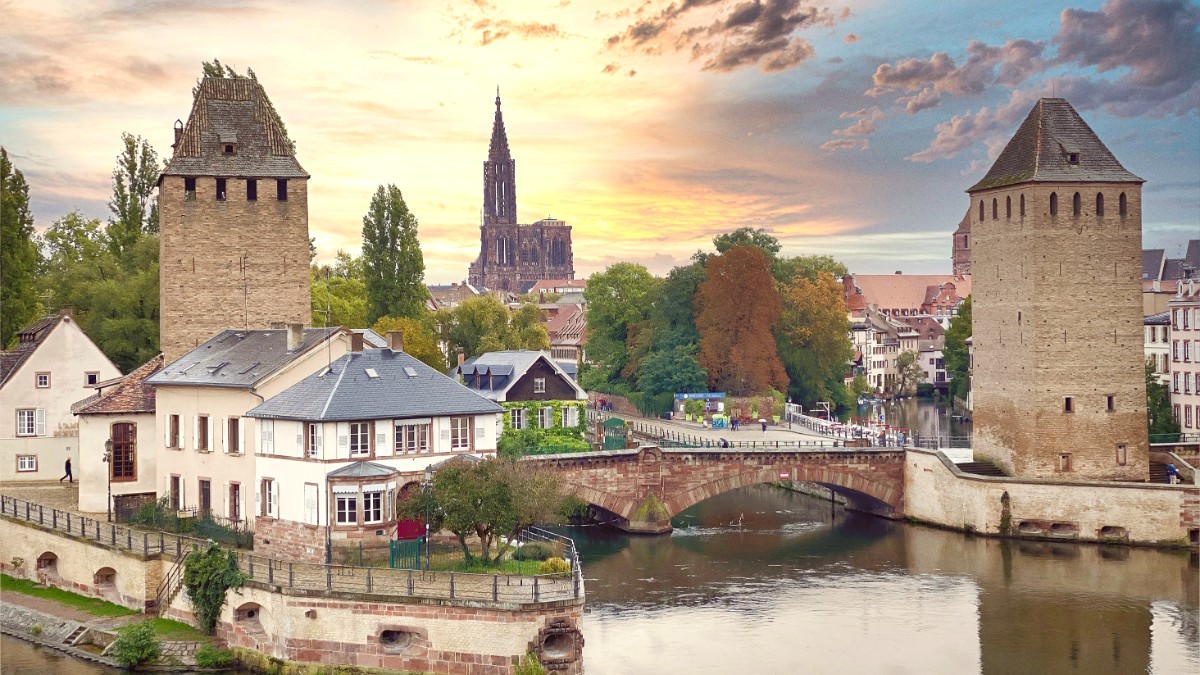
Alsace And Lorraine, France
Alsatian cuisine is often described as hearty peasant food, rich in flavor and fashioned to yield warmth and sustenance in a colder climate.
It draws heavily from German culinary traditions, using ingredients like pork, cabbage, and potatoes, but incorporates French refinement.
Pork (smoked, cured, fresh), duck, and various sausages are prominent.
Sauerkraut (choucroute), potatoes, and onions are staples.
Fresh cream and strong local cheeses like Munster.
The quintessential Alsatian dish. Fermented cabbage slow-cooked with white wine, served with various cuts of salted and smoked pork.
Cuts include sausages, bacon, ham, and sometimes duck or goose confit. Potatoes accompany the dish.
A very thin, crispy dough base, similar to a pizza, but topped with crème fraîche, thinly sliced onions, and lardons.
Cooked rapidly in a wood-fired oven. Many variations exist.
A hearty casserole dish. Combines marinated cuts of meat (beef, pork, and lamb are common) with sliced potatoes, leeks, onions, and carrots.
Slow-cooked for several hours in a ceramic terrine with white wine and herbs. Perfect for cooler weather.
Small Alsatian Christmas cookies. They arrive in various shapes and flavors and are specifically popular during the holiday season.
A distinctive ring-shaped Alsatian brioche, often with raisins and almonds, sometimes dusted with powdered sugar.
Restaurant Buerehiesel (Michelin-starred, modern Alsatian cuisine). Le Crocodile (Michelin-starred, refined French cuisine).
Numerous options throughout the city. Look for brasseries (traditional French restaurants) and traditional winstubs (Alsatian taverns/restaurants).
Bakeries (Boulangeries/Pâtisseries) for affordable breakfast, lunch sandwiches, and treats. Street food includes pretzels, waffles, and crêpes.
Vegetarian options are increasingly available, especially in modern restaurants and cafes. Traditional Alsatian cuisine is very meat-heavy, so options may be limited in traditional winstubs.
Look for specific vegetarian or vegan restaurants online.
Awareness of gluten-free ("sans gluten") and other allergens is growing in France. Inform the waitstaff about your allergies.
Carry a Translation card with your specific dietary needs in French if you have severe allergies.
Learn to prepare traditional dishes like Flammekueche or Choucroute.
Visit wineries along the Wine Route for tastings. Explore cheese producers or artisanal bakeries.
Various culinary events happen throughout the year. The Christmas market is a major food event.
Dining in a traditional winstub delivers an authentic Alsatian experience.
Regional Variations within Strasbourg: Strasbourg, an European capital, boasts a sophisticated and diverse dining scene. Find traditional winstubs serving authentic local fare alongside modern French restaurants, international eateries, and fusion kitchens.